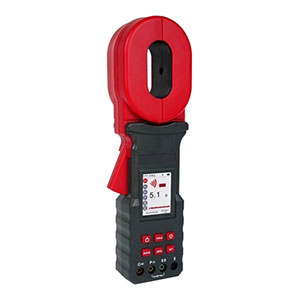How to Use an Earth Resistance Tester?
The earth resistance tester is a commonly used electrical testing device designed to measure the ground resistance value of current grounding systems. The ground resistance value reflects the quality of the grounding system, holding crucial significance in ensuring the safe operation of electrical equipment and personal safety. In this article by ATO Industrial Automation, we will introduce the usage methods and precautions of the earth resistance tester.
Usage Methods of the Earth Resistance Tester
- Pre-Test Preparation:
- Check the tester's power supply and handle connections.
- Thoroughly inspect the insulation of the grounding device to be tested.
- Choose the appropriate test current and test duration.
- Connect the Tester:
Connect the two electrodes of the tester to two different grounding points on the device to be tested, ensuring close contact. - Conduct the Test:
Turn on the tester switch and set the tester's timing to automatic or manual. In automatic testing, the tester will complete the test process automatically and display the results. In manual testing, manual initiation and termination of the test are required.
During the test, maintain good contact between the tester's electrodes and the device to be tested, avoiding electrode movement or causing mechanical damage. - Record Test Results:
After completing the test, record the results and save the test data for reference and analysis. Additionally, carefully check if the tester is properly turned off to avoid potential damage or interference with the next test.
Precautions for the Earth Resistance Tester
- Safety Operations:
Earth resistance testing involves high voltage and current, making strict adherence to relevant safety regulations and operating procedures essential. Avoid unauthorized modifications to the tester's circuits or parameters to prevent safety incidents. - Compliance with Safety Regulations:
Adhere to relevant safety regulations during usage. Before use, inspect the electrical connections of the tester, such as the power source and plugs, ensuring there are no issues such as burrs or fractures.
- Appropriate Selection of Testing Conditions:
Select different testing conditions based on the characteristics of the test object, such as test current and test duration. Reasonable parameter selection enhances the accuracy and reliability of the test. - Prevention of High Voltage Breakdown:
Inspect the test object before testing. Repair or replace damaged or damp components to ensure the accuracy of the test. During testing, insulation between the tester's electrodes and the device to be tested is necessary to avoid high-voltage breakdown incidents. - Maintenance Attention:
The earth resistance tester is a precision testing device that may experience wear and aging with prolonged or frequent use. Regular maintenance and timely replacement of parts, along with circuit inspections, are necessary to extend the tester's lifespan. - Environmental Considerations:
During usage, consider the environmental factors such as humidity, temperature, and atmospheric pollution, as these can impact the accuracy of test results.
In conclusion, this provides a brief introduction to the usage methods and precautions of the earth resistance tester. When using the tester, prioritize safety and accuracy to ensure reliable and precise testing. Additionally, promptly troubleshoot and repair common issues to guarantee the normal functioning of the tester, ultimately securing the safe operation of electrical grounding systems.

